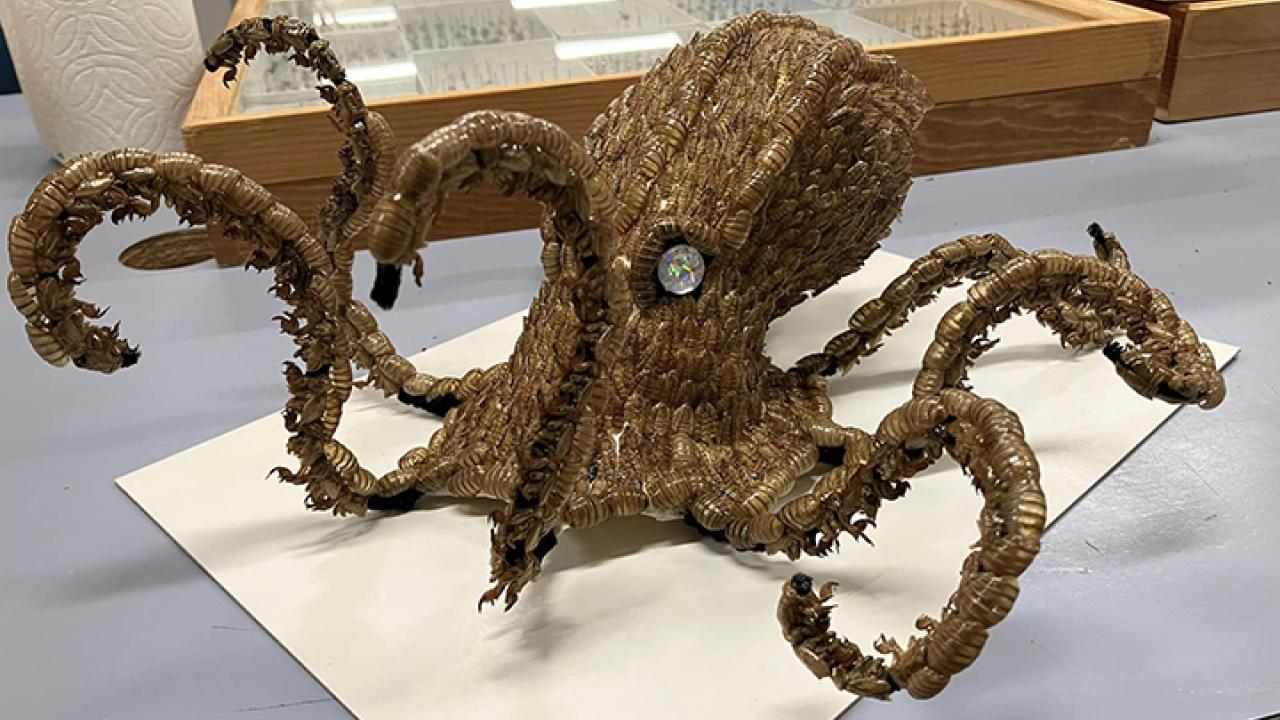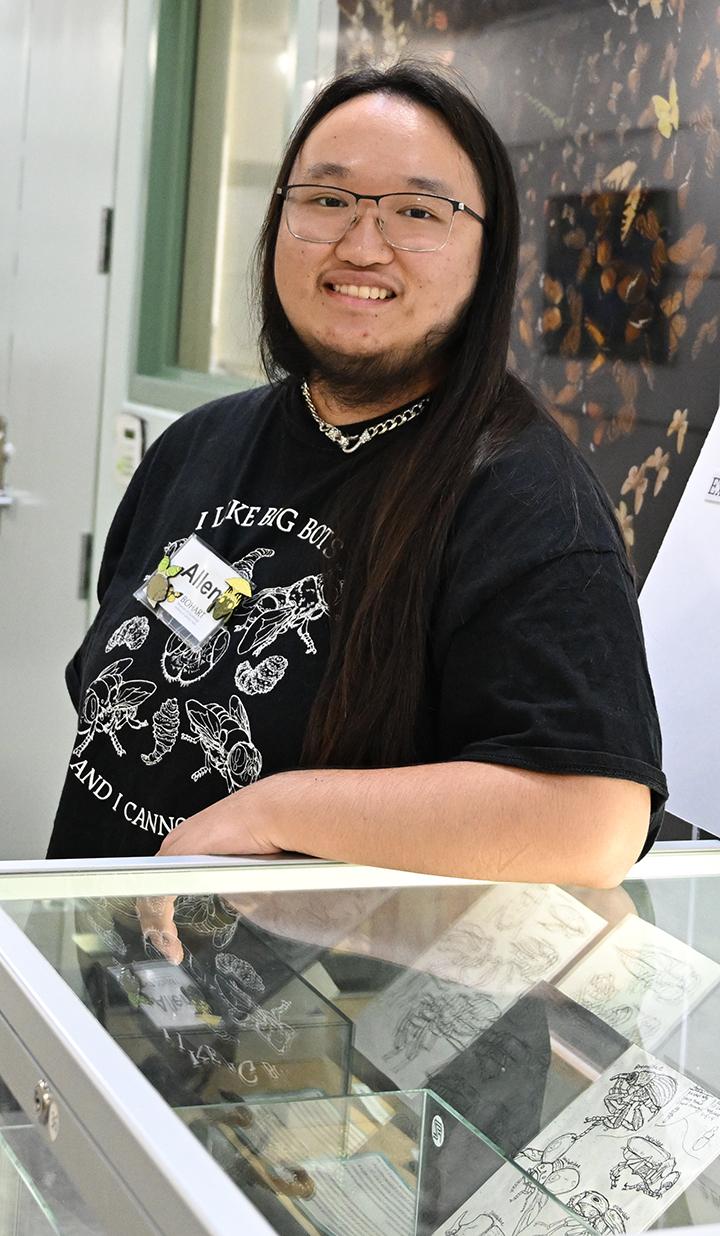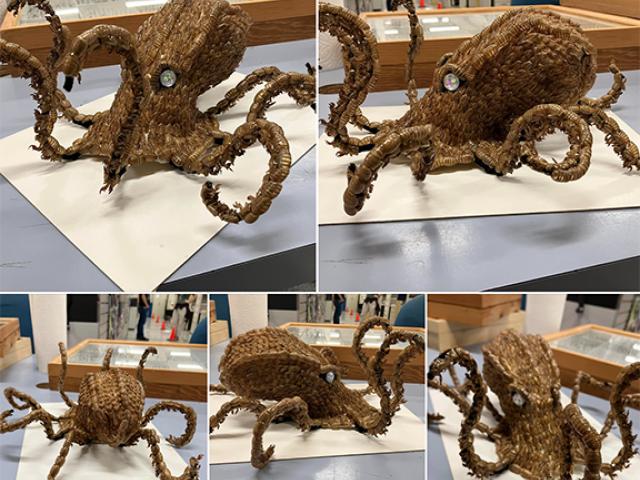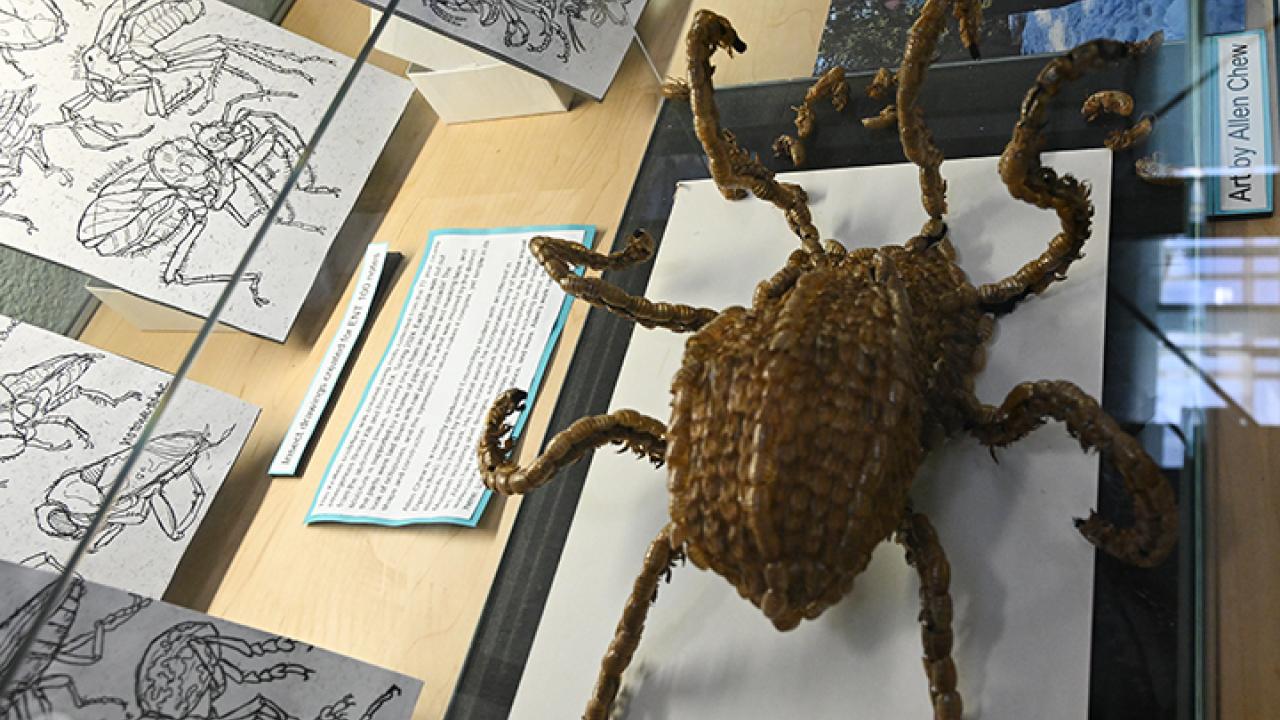
An Amazing Kraken Sculpture by Entomologist/Artist Allen Chew
UC Davis Alumnus Creates Octopus from Cicada Molts

Entomologist-artist Allen Chew, an associate with the Bohart Museum of Entomology outdid himself with his kraken sculpture of an octopus.
It’s made of cicada molts collected last spring from emergences in the midwest and southeast regions of the United States.
Specifically, they're from Broods XIII and XIX, which are two of the 15 broods of periodical cicadas, Magicicada spp.
Every 17 years, Brood X11, also known as the Northern Illinois Brood, tunnels en masse to the surface, mates, lays eggs in tree twigs, and then dies off, all within a several period. Brood X1X, also known as The Great Southern Brood, is the most widely distributed brood of 13-year periodical cicadas.
UC Davis distinguished professor emerita professor Lynn Kimsey, who retired Feb.1 from a career that included 34 years of service as director of the Bohart Museum (she continues her work as researcher and executive director of the Bohart Museum Society), sought out—and found—cicada molts through the Entomology Collection Network (ECN) for the art project.
Alfred Daniel Johnson, a postdoctoral researcher at Tennessee State University, and Professor Daniel Young, professor and director of the Wisconsin Insect Research Collection, each shipped “the equivalent of a lunch bag filled with hundreds of cicada skins,” Kimsey said.
What is a kraken sculpture?
“A kraken sculpture is a sculpture based on a kraken, a mythological giant squid or octopus commonly depicted as devouring ships,” said Chew, who in the spring of 2024 received a bachelor’s degree in entomology, specializing in Diptera (flies).

For the kraken project, Chew first made a wire frame--no sketches--and then “went straight into the sculpture.”
"Each scale was cut out from the abdomen pieces, so every one is from an individual cicada," he explained. "The sculpture is supported by a frame of pipe cleaner wires and masking tape and the parts were laid down with nail polish....I was inspired by the distinct look of octopuses, and the symmetrical nature makes it complex, yet simple in its shape and construction."
Chew started the project on July 31, "completed most of it by Aug 9, took a break, and finished it off on Sept. 3." It is now featured in a hallway display across from the Bohart Museum, located in Room 1124 of the Academic Surge Building, 455 Crocker Lane.
"People like the detail and imagination involved in the construction," Chew commented.
'Whole Lot of Creative Talent'
"It is cleverly eerie and deceptively simple," said Tabatha Yang, the Bohart Museum's education and outreach coordinator. "I like how he took segments of the molts to get different patterns. Otherwise, it is a pipe cleaner frame, cicada molts and a whole lot of creative talent."
Said Bohart research associate Sandy Shanks: "Allen's imagination turned a box of shed cicada nymph exoskeletons into an amazing work of art that only someone with his creative mind could envision."
Chew worked as a student intern at the Bohart Museum for three years as a curator and artist. He collected, sorted, curated and identified insects. He also is engaged in the Bohart Museum's outreach programs. As an artist, Chew works in numerous art mediums, including pencil, pen, watercolors, digital art, magnetic art and ceramics. His work for the Bohart Museum includes a large educational magnetic art display that graces a wall near the entrance. He also does shirt designs, invitation card art and other projects. In addition, his expertise includes character design work and illustration. Chew studied animation in a summer program at the California Institute of the Arts.
Draws Inspiration from the Natural World
"I draw inspiration from the natural world and incorporate many of these visual elements into my work," Chew said. His work can be found at linktr.ee/toldentops.
His career plans? "I’m still looking around," he said. "I’m hoping to gain some new experiences while still applying all the skills I’ve learned. Ideally, I’d love to do something that combines science and art."
The Bohart Museum houses a global collection of 8 million insects; a live petting zoo, including Madagascar hissing cockroaches, stick insects and tarantulas; and an insect-themed gift shop stocked with books, posters, t-shirts, hoodies, jewelry, stuffed toy animals, collecting equipment and more. Director of the Bohart Museum is Professor Jason Bond, the Evert and Marion Schlinger Endowed Chair, UC Davis Department of Entomology and Nematology, and associate dean, UC Davis College of Agricultural and Environmental Sciences.
More information is available on the Bohart website or by contacting bmuseum@ucdavis.edu.

